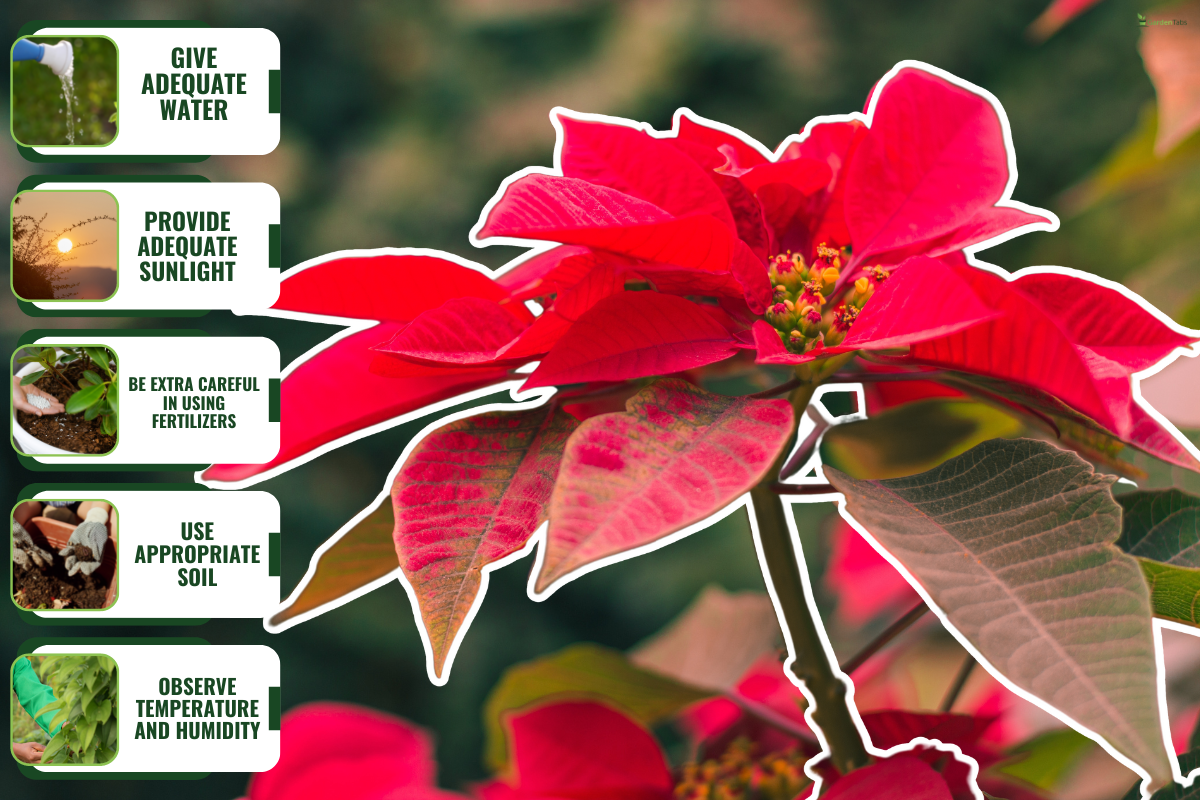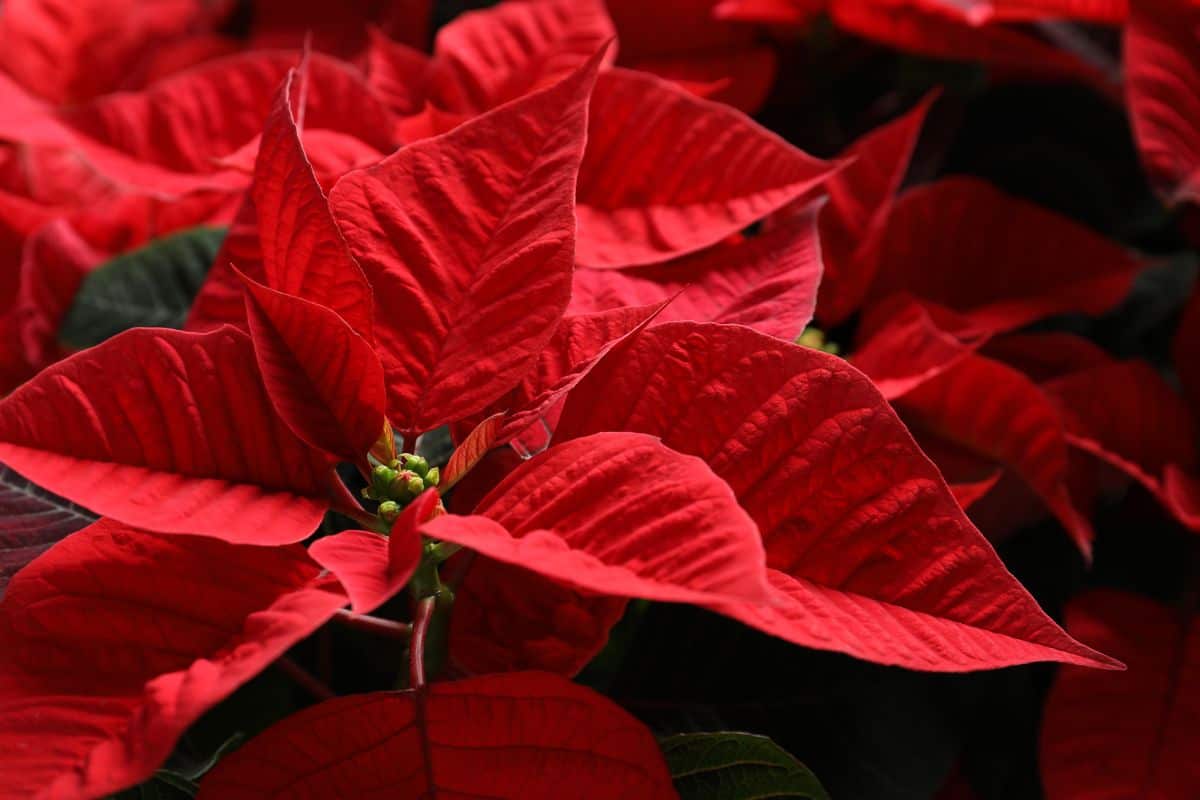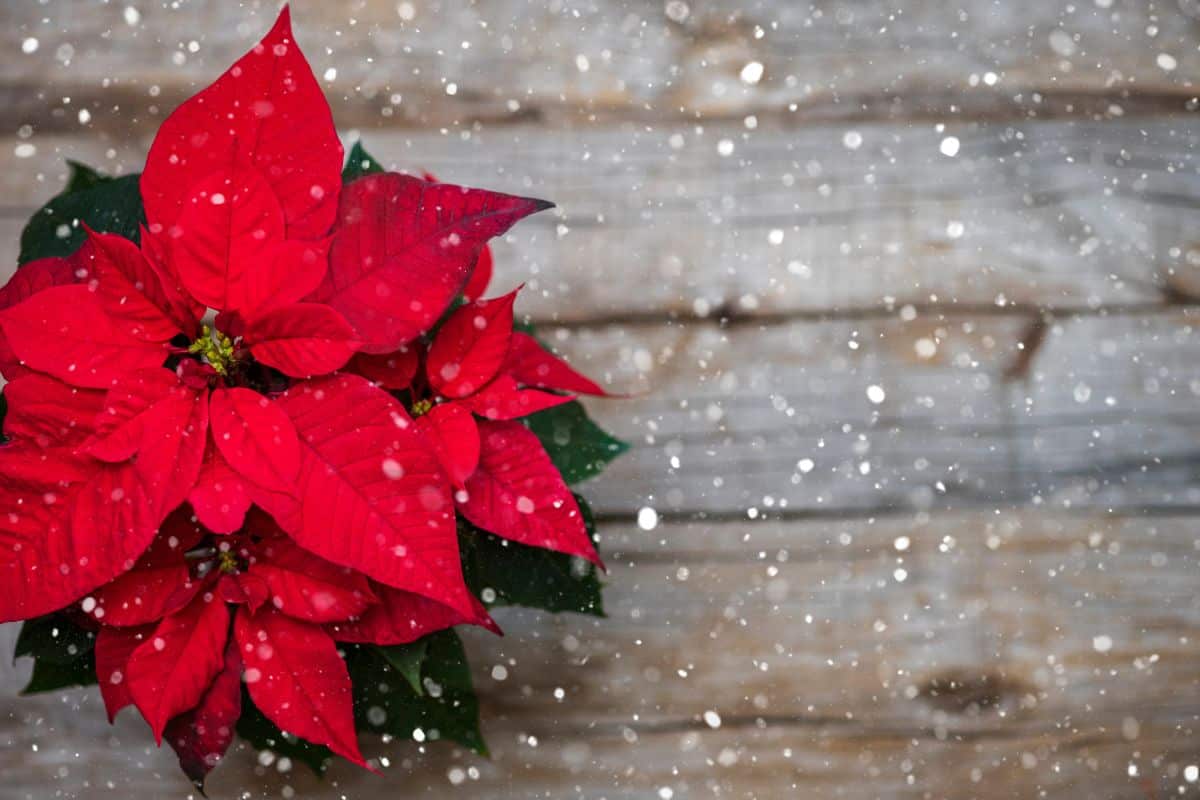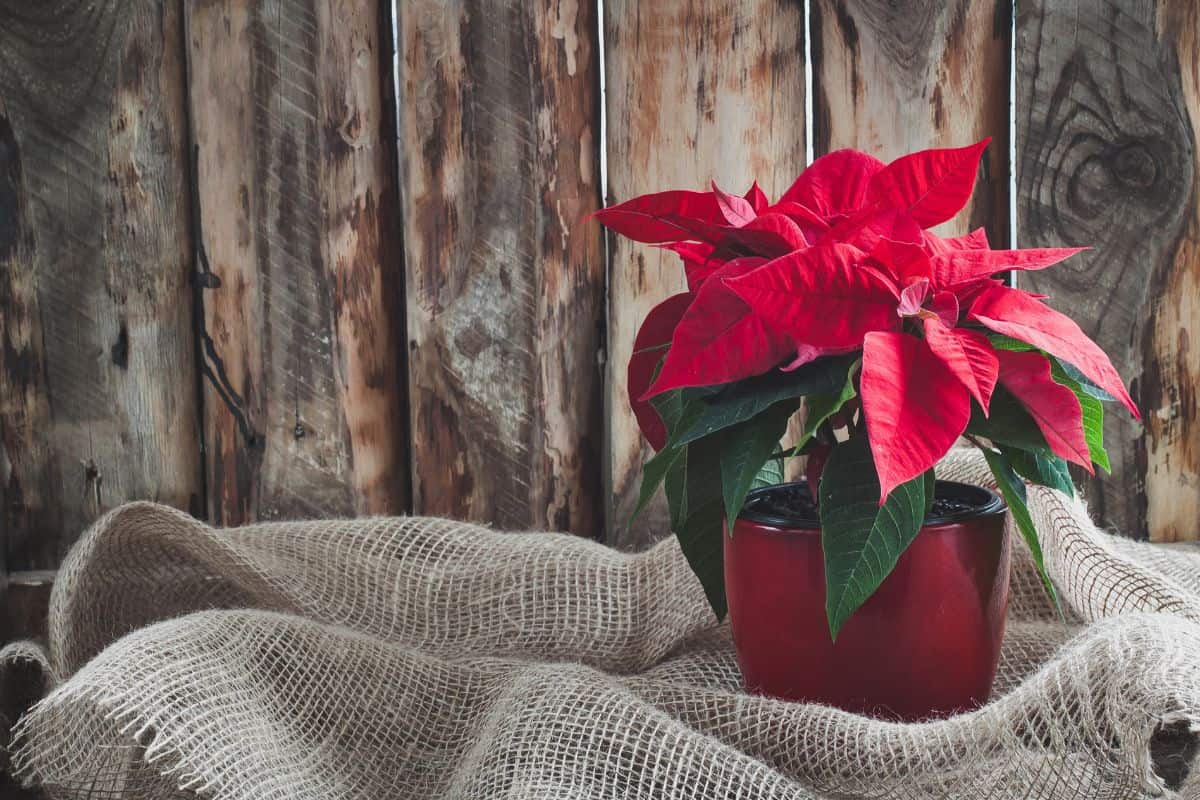Poinsettias are one of the most attractive flowers existing. Keeping it blooming vibrantly during the holiday season gives you a gorgeous display. And since most of you are curious whether it is an annual or perennial plant, we have thoroughly researched this. Good thing that we have finally determined the answer!
Many people think that poinsettias are annuals, but they are perennial plants. This plant originated in Mexico. Although you can typically plant it as an annual in preparation for the winter holidays, you may still cultivate it as a perennial plant in areas where the average winter temperature is over 50 degrees Fahrenheit.
If you wish to continuously use poinsettias to add decorations and liveliness to your home, it would be best to know how to take care of them correctly. So, we encourage you to keep reading and determine the proper ways to grow poinsettias year after year. Doing so will also help you out in identifying the different problems that poinsettias might encounter. Let's delve into the details!
How To Properly Care For A Poinsettia

If you don't know how to grow or care for a poinsettia plant properly, it would be best to follow the guidelines below. Accomplishing everything below will help your poinsettia plant achieve vibrant blooms and be healthy throughout its existence.
Give Adequate Water
When you check your poinsettias and notice that the soil is already dry, you should give them adequate water.
Adequately watering means letting the water run through the bottom of the poinsettias' container. It is advisable to utilize well-draining soil and a container with drainage holes to allow the water to drain correctly in the bottom to avoid water logging.
However, if the pot is decorated with foil wrap, it would be best to poke holes through the bottom for proper drainage. Remember that if you overwater your poinsettias, you'll be killing them. You'll know you are giving the plants too much water if you notice that the foliage is wilting and the roots rot.
Provide Adequate Sunlight
You can help your poinsettia thrive if you put it in a location where it can get bright and indirect sunlight. Know that the advisable spot is near a sunny window. Leave the plant for up to eight hours daily.
Although poinsettias can still tolerate even fewer hours of indirect sunlight, expect that they won't be as vibrant as when you give them full indirect sunlight. Additionally, they might be short-lived in that situation.
Furthermore, keep in mind that placing your poinsettia where it can get direct sunlight will obtain burnt leaves and bracts.
Be Extra Careful In Using Fertilizers
Please refrain from fertilizing your poinsettia plants while they are in bloom.
The ideal time to fertilize is during spring, when there is no growth. Fertilize at half-strength. Follow this carefully, especially if you plan on keeping the pointsettia year-round. Feed the plant every three to four weeks until you notice that you have finished re-establishing the poinsettia.
Use Appropriate Soil
You can buy already potted poinsettias in garden stores. However, it is a must to ensure that the soil is well-draining. Also, peat-based soil is advisable. So, replanting the poinsettias in such mentioned potting soil would be best if you wish them to thrive.
In addition, in USDA zones 9 to 11, where the climate is a bit warmer, you can plant poinsettias in the yard. You need to ensure a well-draining and slightly acidic to neutral soil.
Observe Temperature And Humidity
The ideal temperature to provide your poinsettia plant during the daytime is between 65 to 75 degrees Fahrenheit. You shouldn't worry even if the temperature drops somewhat at nighttime because the poinsettia will still be fine.
However, your poinsettia may experience leaves injury, turn yellow, and fall off prematurely if you let the following happen:
- Ignoring the leaves to come in contact with a cold window
- Exposing the leaves to chilly leaves
- If you don't provide your poinsettias with sufficient sunlight
Know that poinsettias cannot tolerate dry environments. So, it would be best to provide them with enough humidity by utilizing a humidifier. Using such is the best option to improve the moisture in your plant's surroundings.
How To Keep Poinsettias Blooming?

Growing a poinsettia year-round and coaxing it into flowering again in time for the holidays requires strict adherence to a regimen.
Getting your plant to rebloom isn't a straightforward thing to do, but you can use this timetable to reach your desired outcome:
During Winter To Early Spring

You should keep the poinsettias damp throughout the winter season but don't drench them in water. After you accomplish such, it would be best to start the following steps in early spring:
- Water less frequently at first, letting the soil dry out in between soakings. The shrinking of the poinsettia's stem indicates the plant is under too much stress and will soon die.
- After a week or two of acclimating the plant to the drying method, you can relocate it to a cooler location. You can choose between the basement or your garage. Additionally, you should maintain a temperature of about 65 to 75 degrees Fahrenheit.
During May
Perform the following by the middle of May:
- You should transplant your poinsettia into a new pot. And to do that, you should trim the stems around four inches. Fill the new pot with a fresh potting mix and replant the poinsettia. Additionally, you must ensure that the pot contains enough drainage holes.
- After repotting, give the plant plenty of water and put it in the sunniest window possible, maintaining a temperature of between 65 to 75 degrees Fahrenheit.
- Check the plant regularly. If the soil feels dry to the touch, it would be best to water the poinsettias adequately.
- Look out for signs of fresh development.
- Once you notice fresh growth, it is a must to feed the poinsettias with a complete fertilizer. And it is advisable to do it every two weeks.
Click here to check out these plastic pots with drainage holes on Amazon.
During Summer (Early July)
Take your poinsettia outside this summer! However, you need to keep it in a semi-shaded area, with consistent watering and fertilizer.
- Start pinching down your plants' stems by approximately an inch in early July if you want a robust plant with many branches. The poinsettia will get unwantedly tall and leggy if not pruned.
- You can expect that the stems will have branched and developed leaves by the middle of August. In this case, remove the lower leaves from the young stems by trimming them. After that, put the poinsettia in an area where it can get the brightest indirect sunlight.
During October
Because of the poinsettias' short day length sensitivity, the winter holiday season coincides precisely with the time of year they bloom.
Approximately ten weeks of continuous darkness is what you need to provide your poinsettias, between 12 and 14 hours daily. Know that it is a must to allow them to rebloom. In this case, you'll need to take deliberate action to manufacture these circumstances.
Follow these steps at the very outset of October:
- The hours of darkness between 5 p.m. and 8 a.m. are crucial for your plant to bloom properly.
- Make sure no light gets through. Using any material that can completely block any light would be best. Know that even the tiniest light can negatively impact the bud set of your poinsettias.
- Putting the poinsettias back in the window where they can get indirect sunlight during the day is a must. During this time, continue fertilizing and watering them.
During November And December
Remove the poinsettia from the dark environment around the last week of November and place it close to a window. New shoots should now be visible.
Additionally, it would be best to wait until mid-December before resuming fertilization. Maintain the same level of care you gave your poinsettia when you obtained it home in blossom, including regular watering. You'll know that you did well if the bracts start to display color.
What Are The Problems Poinsettias May Encounter?

Growing poinsettia properly is not always about making them bloom vibrantly. You should also watch for the following issues that your plant may face.
Why Are My Poinsettia Leaves Falling Off?

Defoliation is a threatening problem that can ultimately prove fatal to the poinsettia. Aside from the leaves falling, your poinsettia may also experience extreme root rot or acute abscess because of the following:
- Overwatering
- Underwatering
- Overfertilizing
In such a case, know that the poinsettia may benefit from a boost in illumination.
Why Are My Poinsettia Leaves Turning Yellow?
When a poinsettia plant is under stress, its leaves will either turn entirely yellow or grow a yellow ring around the veins. Many factors contribute to poinsettia's leaf yellowing, including:
- The magnesium levels are too low for the poinsettia plants.
- If the soil pH of your poinsettia plants isn't over 5.5, the plant won't obtain enough molybdenum, a vital trace mineral.
- You are over-fertilizing the poinsettias.
- Leaves are developing powdery mildew, which you can only treat with a fungicide.
- Yellowing poinsettia leaves might be because of too acidic potting soil.
- You may be overwatering the poinsettias, not providing enough light or too little heat.
Why Are The Leaves Of My Poinsettia Turning Brown?
Root rot causes the stalks of a plant to turn dark brown. If your poinsettia develops blight, you may be able to save it by cutting off the brown spots that appear all over it.
All you need to do is cut off diseased sections of the poinsettia and replant the healthy pieces in fresh soil. Moreover, it would be best to use sterilized containers. And lastly, spray some fungicide on the poinsettia, just in case.
Wrapping It All Up

Although poinsettias are perennials, which means you can grow them year after year, they are still challenging to grow or take care of. And if you wish to achieve a successful outcome and produce vibrant blooms, it would be best to follow every guideline mentioned in this post.
You have finally made it to the end! We hope you find this post helpful. If you still have additional questions, don't hesitate to reach out in the comments. And for further reading, you can check these other posts!

